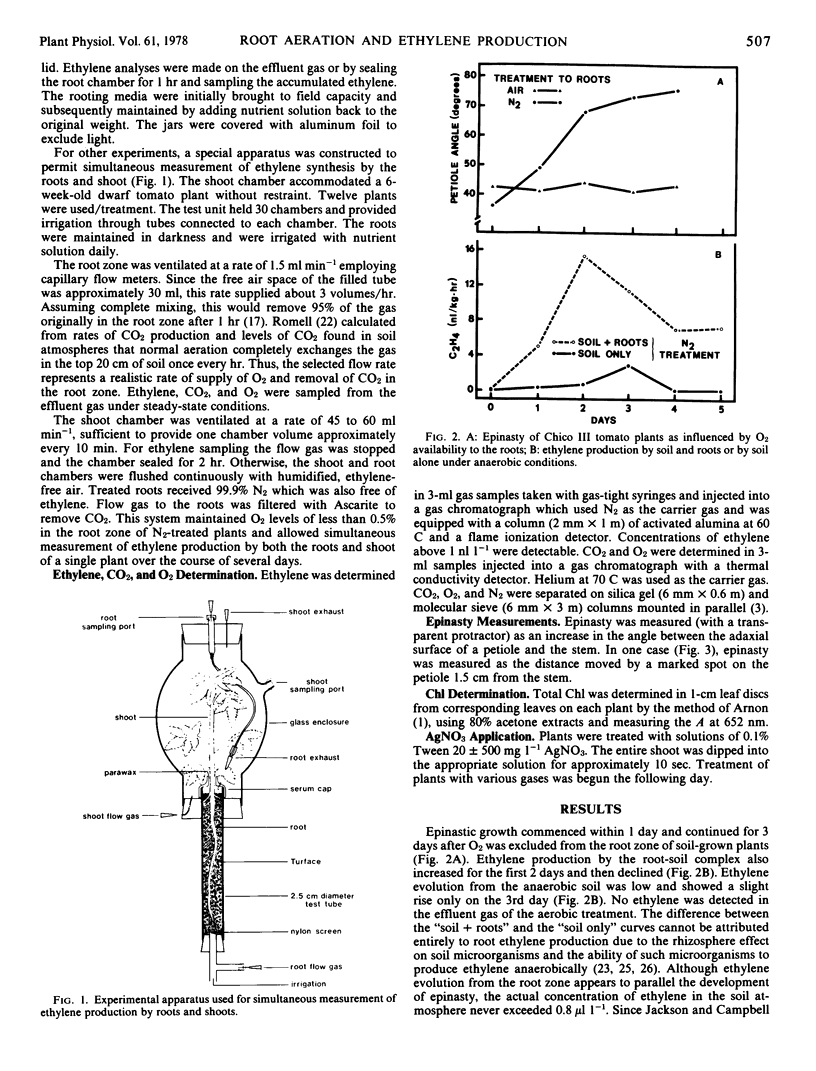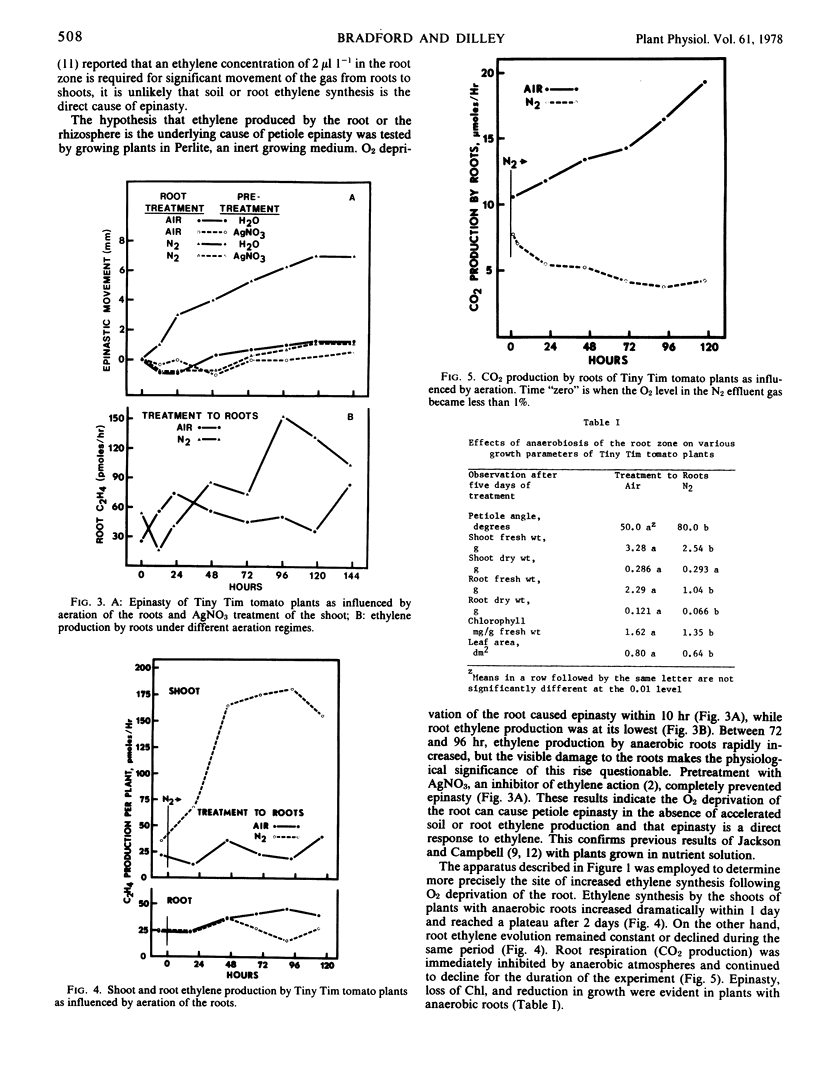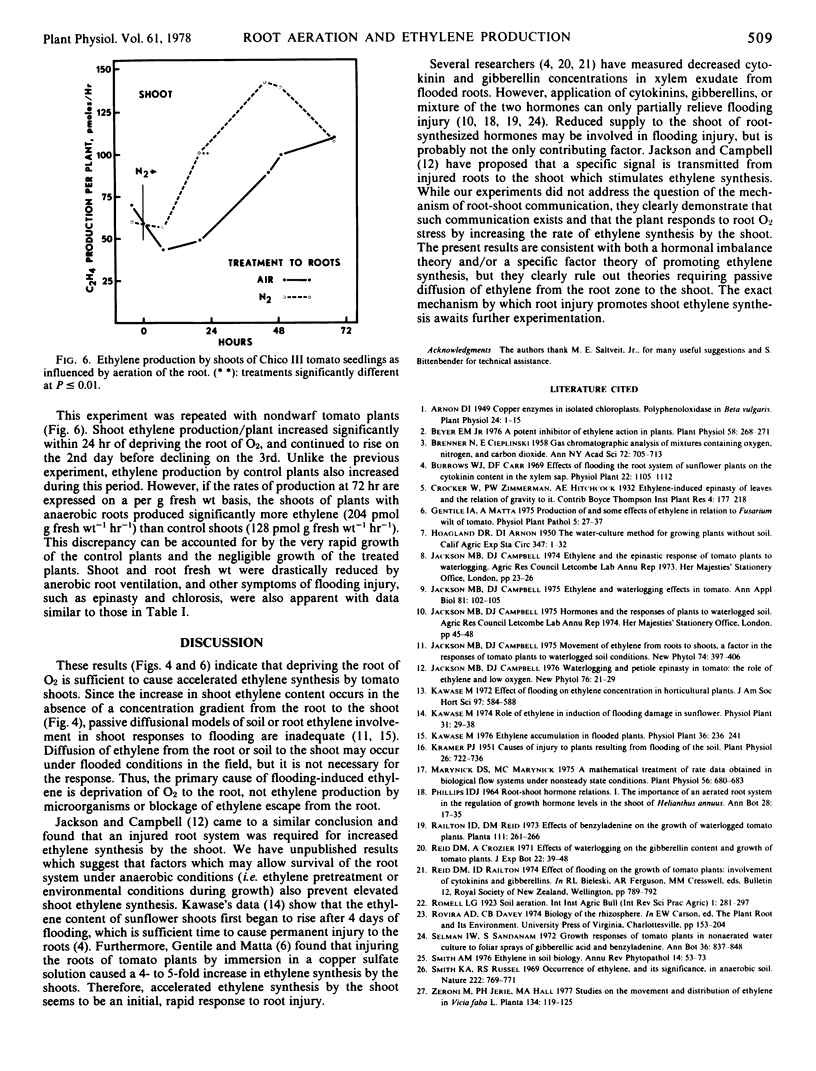Abstract
Experiments were performed to determine the source(s) of ethylene-causing epinasty in flooded tomato plants (Lycopersicon esculentum Mill.). Simultaneous measurements were made of ethylene synthesized by the roots and shoots of tomato plants exposed to either aerobic or anaerobic atmospheres in the root zone. When the root zone was made anaerobic by a flowing stream of N2 gas, petiole epinasty and accelerated ethylene synthesis by the shoots were observed. In soil-grown plants, ethylene synthesis by the root-soil complex increased under anaerobic conditions; but when grown in inert media under the same conditions, ethylene synthesis by roots remained constant or declined during the period of rapid epinastic growth by the petioles. Other characteristic symptoms of flooding, e.g. reduced growth and chlorosis, were also observed in plants with anaerobic roots. Pretreatment of plants with AgNO3, an inhibitor of ethylene action, completely prevented epinasty, demonstrating that ethylene is the agent responsible for waterlogging symptoms. These results indicate that deprivation of O2 to the roots is the primary effect of soil flooding, and that this is sufficient to cause increased ethylene synthesis in the shoot. The basis of the observed root-shoot communication is unknown, but root-synthesized hormones or specific ethylene-promoting factors may be involved.
Full text
PDF



Selected References
These references are in PubMed. This may not be the complete list of references from this article.
- Arnon D. I. COPPER ENZYMES IN ISOLATED CHLOROPLASTS. POLYPHENOLOXIDASE IN BETA VULGARIS. Plant Physiol. 1949 Jan;24(1):1–15. doi: 10.1104/pp.24.1.1. [DOI] [PMC free article] [PubMed] [Google Scholar]
- Beyer E. M. A potent inhibitor of ethylene action in plants. Plant Physiol. 1976 Sep;58(3):268–271. doi: 10.1104/pp.58.3.268. [DOI] [PMC free article] [PubMed] [Google Scholar]
- Kramer P. J. CAUSES OF INJURY TO PLANTS RESULTING FROM FLOODING OF THE SOIL. Plant Physiol. 1951 Oct;26(4):722–736. doi: 10.1104/pp.26.4.722. [DOI] [PMC free article] [PubMed] [Google Scholar]
- Marynick D. S. A Mathematical Treatment of Rate Data Obtained in Biological Flow Systems under Nonsteady State Conditions. Plant Physiol. 1975 Nov;56(5):680–683. doi: 10.1104/pp.56.5.680. [DOI] [PMC free article] [PubMed] [Google Scholar]


